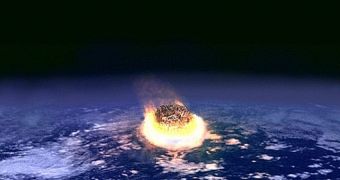It is imperious that NASA established the Planetary Defense Coordination Office (PDCO), as a means of coordinating national and international efforts of protecting the planet against collisions with near-Earth objects (NEO).
This category of space objects includes everything from micrometeorites to asteroids, and generally refers to space rocks that fly close to our planet undetected.
While most NEO will never reach our atmosphere, and most of those who do will burn up upon reentry, there are still some that can pose a great danger to Earth, such as was the case with the 1908 Tunguska event.
An airburster asteroid made its way into our planet's atmosphere, and then exploded some 5 to 10 kilometers above the surface, causing widespread damage to the Siberian forest.
At the time, there were no technologies capable of detecting and tracking NEO in real-time, but advances in science have made that possible now.
However, what is currently lacking is an organized, wide-scale approach to keeping track of the thousands of NEO that may lurk around Earth.
The NASA Advisory Council told an Ad-Hoc Task Force on Planetary Defense to elaborate a report on what the American space agency should do to play a more active role in NEO defense.
The establishing of the PDCO would be a huge step forwards, experts in the task force told NASA officials when they delivered their final report, earlier this month.
A total of five recommendations are delivered in the new document, which argues that the space agency should organize, acquire, investigate, prepare, and lead efforts to prevent NEO disasters, both nationally and internationally.
“This was a very important step in the process of the United States Government defining its role in protection of life from this occasional, but devastating natural hazard,” says former astronaut Russell Schweickart for Space.
“Happily, in the instance of asteroid impacts, this is a natural disaster which can be prevented […] only, however, if we properly prepare and work together with other nations around the world,” he adds.
“With the support of the Administration and the Congress, the US will be in the position of being able to work with and provide leadership in protecting life on Earth from these preventable cosmic disasters,” the space flyer adds.
According to the NASA task force, operating a NEO defense program would cost the United States around $250 million to $300 million per year over the next ten years.

 14 DAY TRIAL //
14 DAY TRIAL //